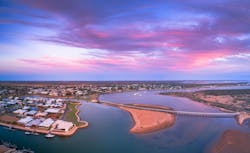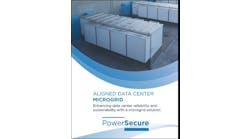Remote Microgrids in Australia Testing Long-Duration Energy Storage Systems
Armed with $1.86 million (Aus$2.85 million) in funding from the Australian Renewable Energy Agency (ARENA), Horizon Power will conduct trials of two different long-duration energy storage (LDES) technologies at remote microgrids in Western Australia.
Horizon Power is the regional energy provider for Western Australia.
The project aims to prove the technical viability of zinc bromine and sodium sulfur batteries in remote microgrids and is driven by a need to find new sources of medium- and long-duration dispatchable renewable energy storage in the region.
“We are really excited about these groundbreaking trials, which will support Australia’s carbon emissions reduction targets, while making renewables more accessible for our regional and remote customers,” said Stephanie Unwin, CEO of Horizon Power.
LDES technologies from Redflow and BASF
Redflow, an Australian battery manufacturer, will provide the 100-kw/400-kWh zinc bromine flow battery to be used at Horizon’s Nullagine microgrid, while BASF’s 250-kW/1,450-kWh sodium sulfur battery will be deployed at the company’s Carnarvon microgrid.
The tests will determine how well each battery performs when storing rooftop solar electricity generated during the day for future use in the evening. It will also explore how the technologies operate alongside the lithium-ion batteries currently being used in the microgrids.
Both LDES battery chemistries can maintain reliable power in higher ambient temperatures over longer periods and with less degradation than lithium-ion batteries.
“Renewable dispatchable technologies such as solar PV and wind combined with lithium-ion battery energy storage systems and pumped hydro are well established, however, there are characteristics of each that may not be suited to all locations, particularly in locations with extreme heat,” said Darren Miller, CEO of ARENA.
“Horizon Power’s project, if proven successful, could see these innovative battery technologies become an important part of our energy mix in regional communities,” he added.
Groundbreaking battery technologies
BASF’s technology, often referred to as a NAS battery, uses molten salt and sulfur that is heated to 572˚F (300˚C). According to a statement from ARENA, this will be the first time this type of LDES battery will be connected to a regulated network and distributed energy resource management system (DERMS) platform in Australia. PXiSE Energy Solutions is providing the DERMS platform.
Redflow’s zinc bromine electrochemical flow batteries are also being installed in LDES microgrids in the U.S. In California, the Paskenta Band of Nomlaki Indians is using the technology, as is Valley Children’s Hospital. Stewart Air National Guard Base in New York is also developing a LDES demonstration microgrid with Redflow batteries.
“Our latest trials will continue our exploration of long-duration energy storage technologies, which are suitable for withstanding the extreme temperatures of our regions, providing valuable insights, which will support … future deployment of the batteries in our regions,” said Unwin.
A successful demonstration will allow Horizon Power to accelerate the rollout of DERMS across its 34 Western Australia service areas.
Track Long-Duration Energy Storage in Microgrids: Subscribe to Our Free Newsletter








